IoT Firmware Development: Best Practices for Scalable Solutions
Written by:

Kostiantyn Oliynyk
Head of IoT at Webbylab
With a robust academic background in Telecommunication Systems Engineering, I apply my knowledge to lead innovations in the IoT domain. Starting as the first team member in the newly formed IoT department at WebbyLab, I've spearheaded its growth, fostering the expansion into embedded and hardware development alongside our core software projects. My dedication lies in pushing the boundaries of IoT technology, fostering a culture of innovation and excellence that profoundly impacts our clients' operational success.
Embedded software is more flexible and can tackle all sorts of tasks, even working with other software. Firmware, though, is more specialized. It’s not as flexible because it handles specific, low-level tasks.
It depends on the industry you’re in. For home automation, use C, C++, or Python. Leverage C, Assembler, and Rust for industrial IoT and C, C++, and MATLAB for healthcare.
Absolutely! IoT firmware can be updated remotely using over-the-air (OTA) updates.
It’s a mix of tasks like coding, testing, integrating with hardware, and dealing with IoT firmware challenges like security.
The timeline depends on the project’s complexity — simple ones might take a few weeks, but if it’s a more advanced system, you’re looking at several months.


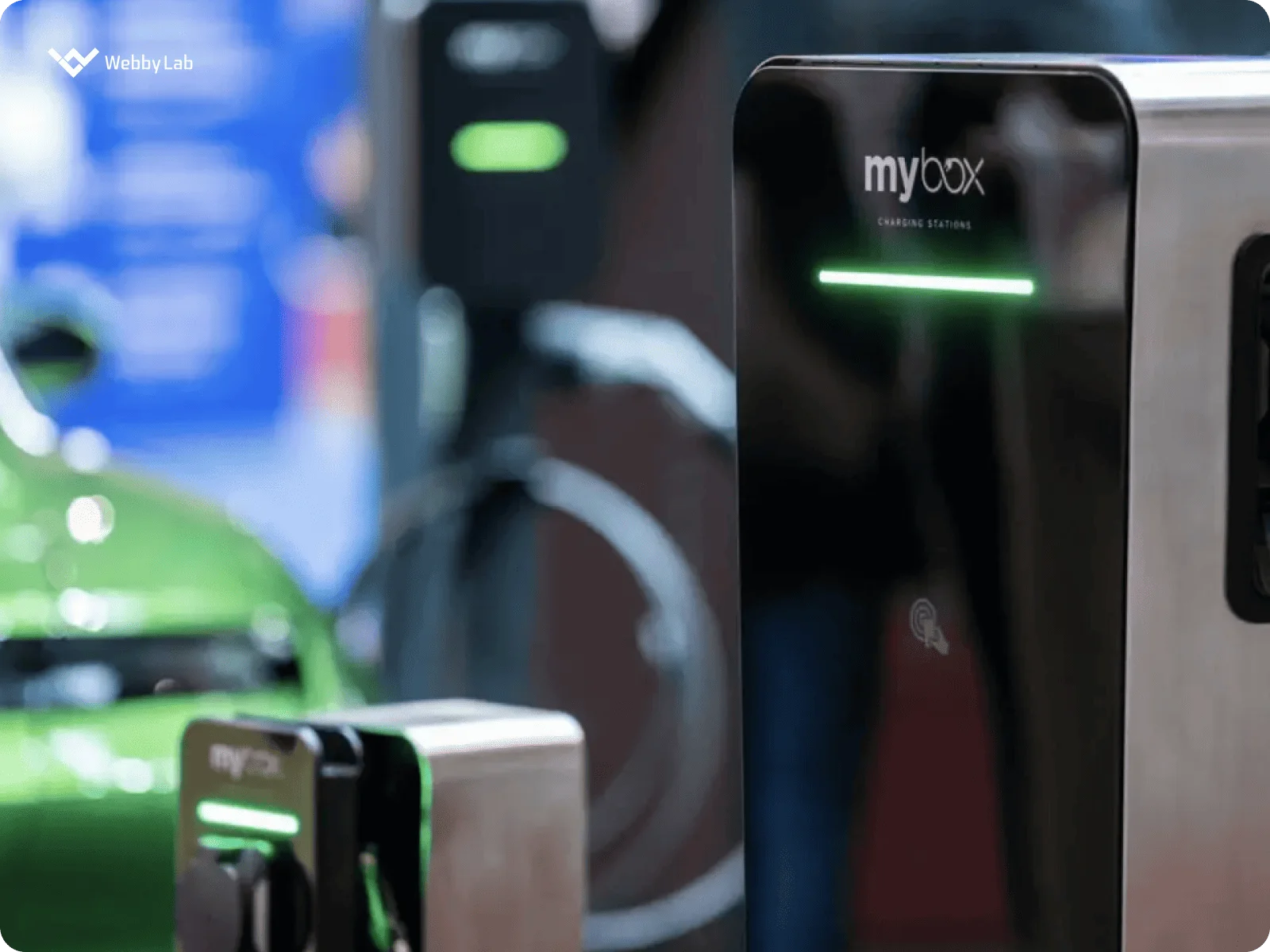 MyBox charging station
MyBox charging station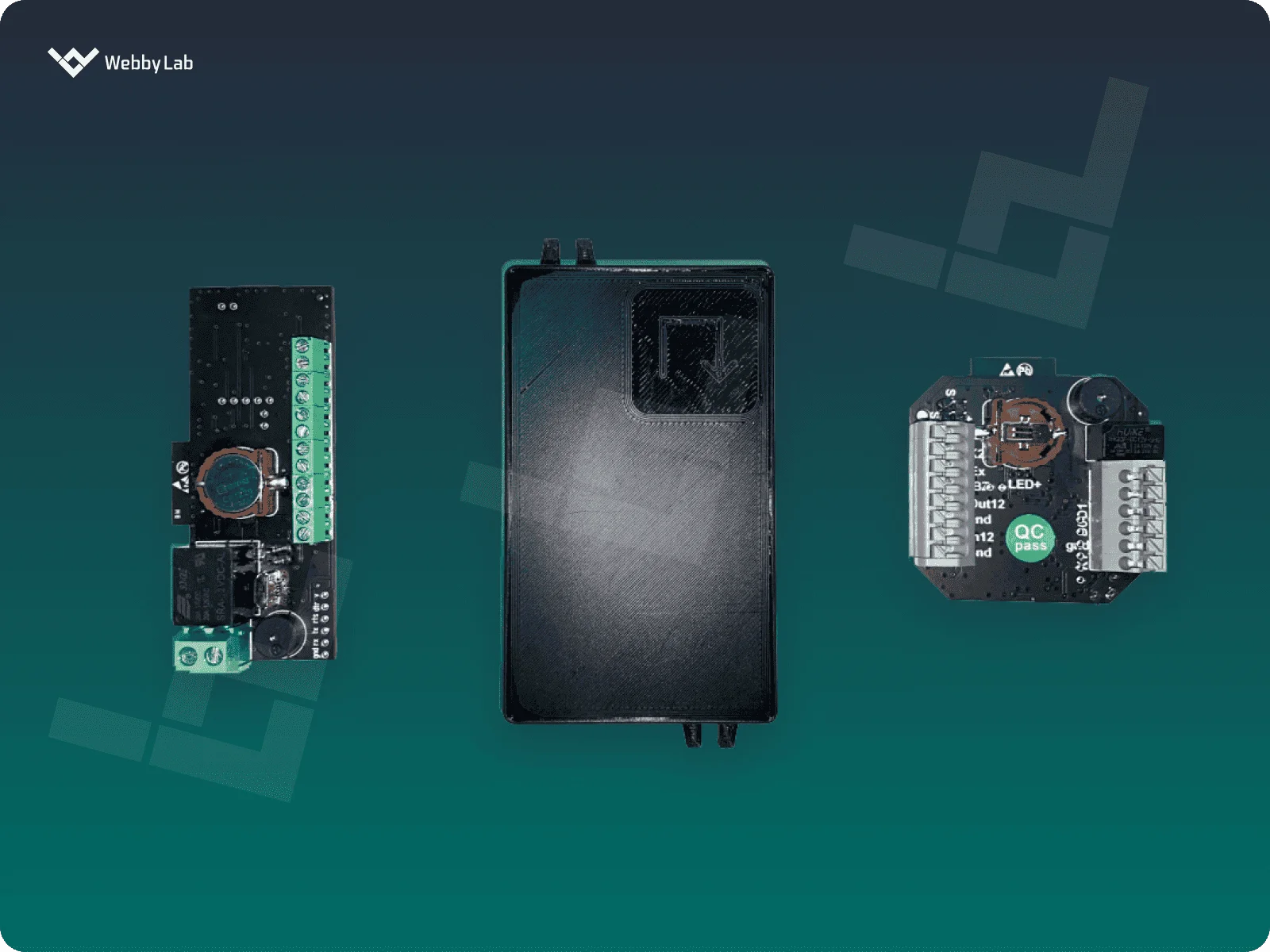 Propuskator controller MVP
Propuskator controller MVP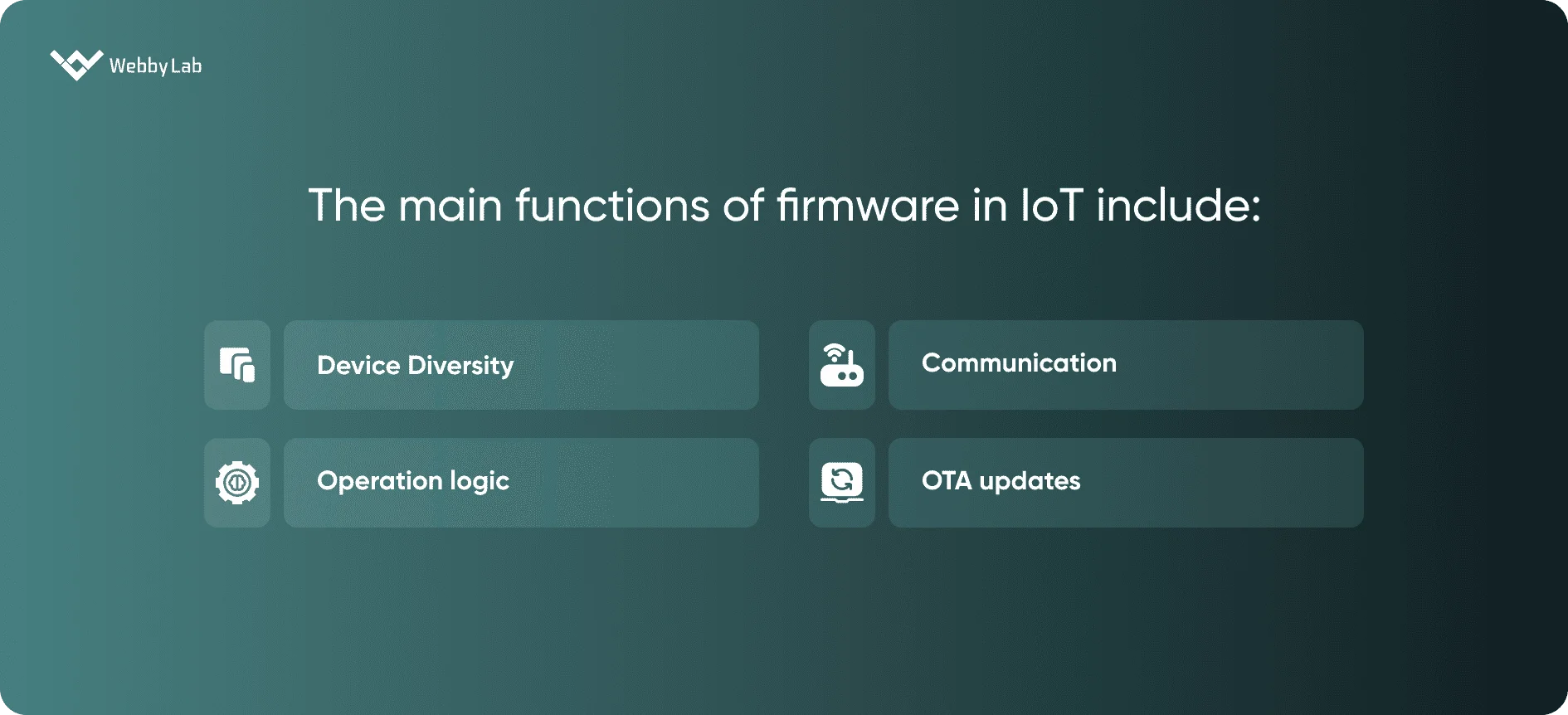
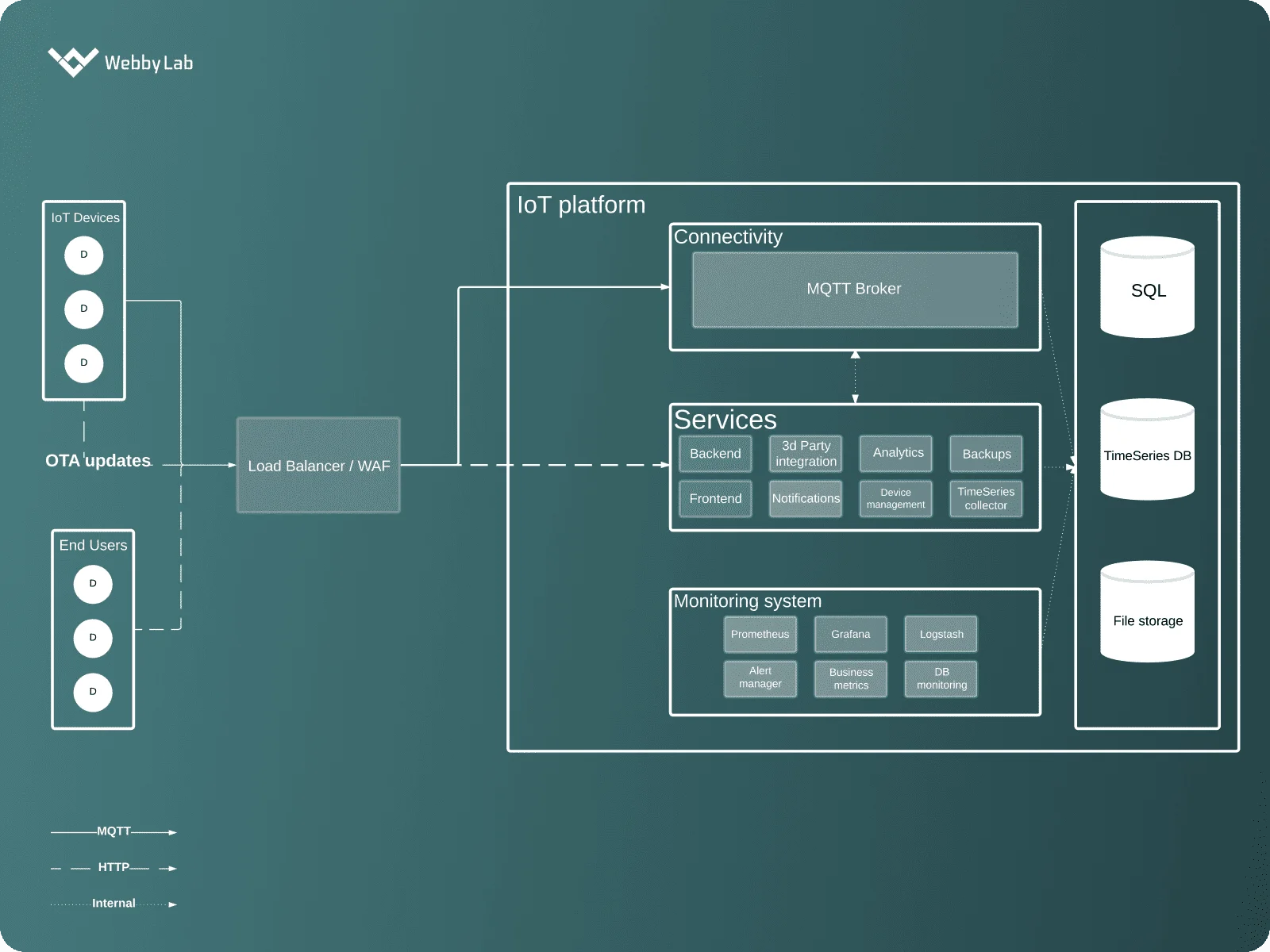 An example of IoT firmware architecture.
An example of IoT firmware architecture.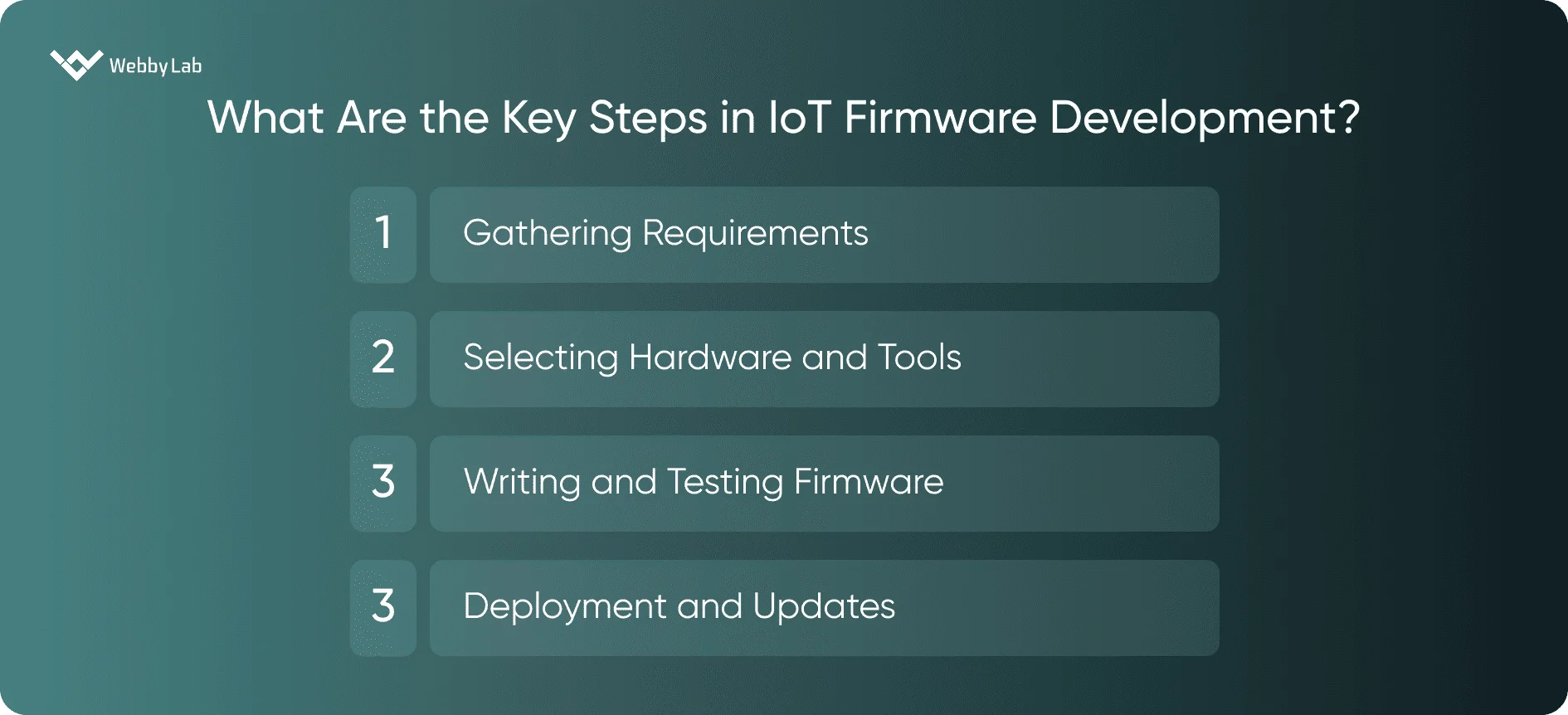

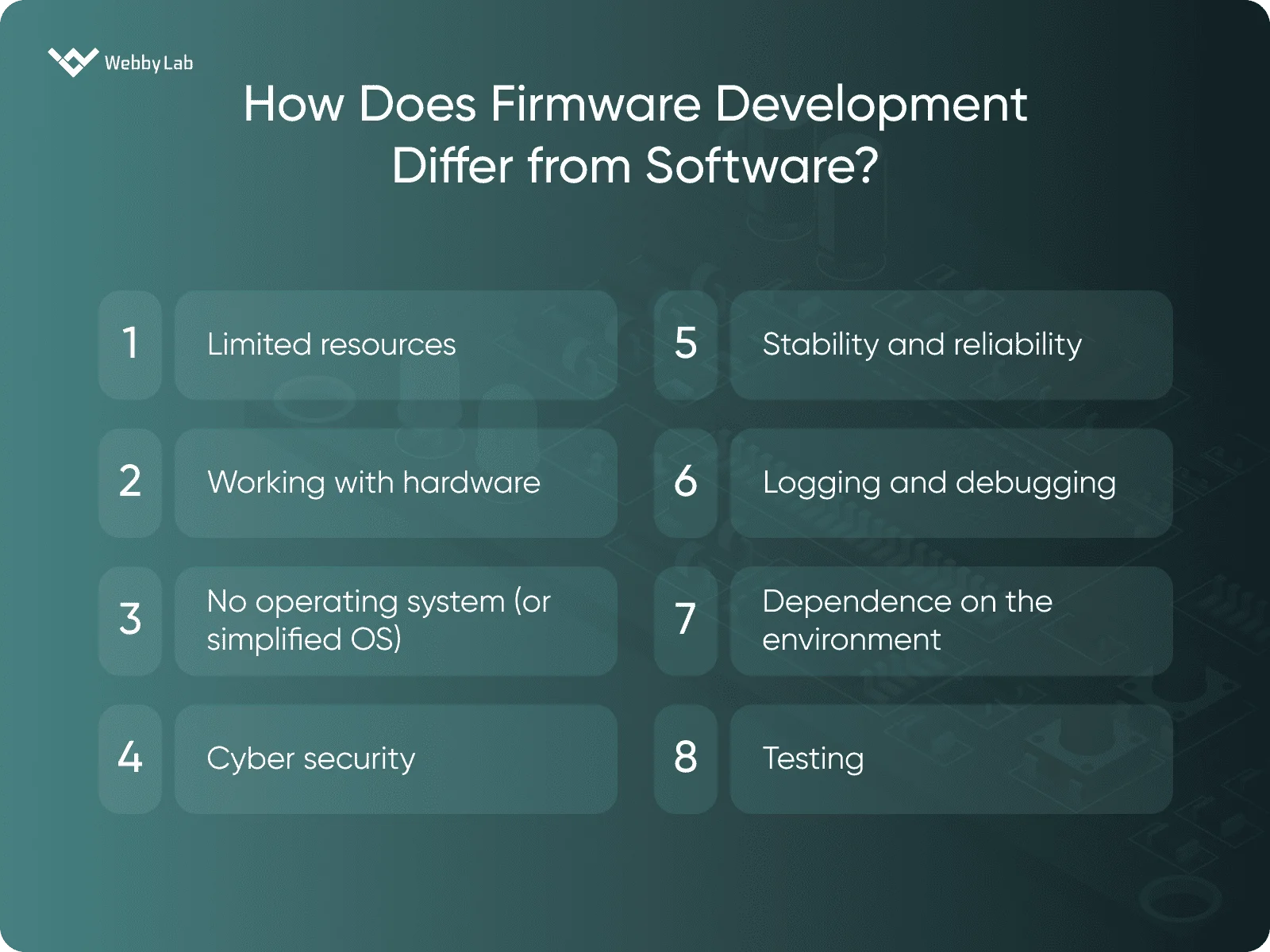
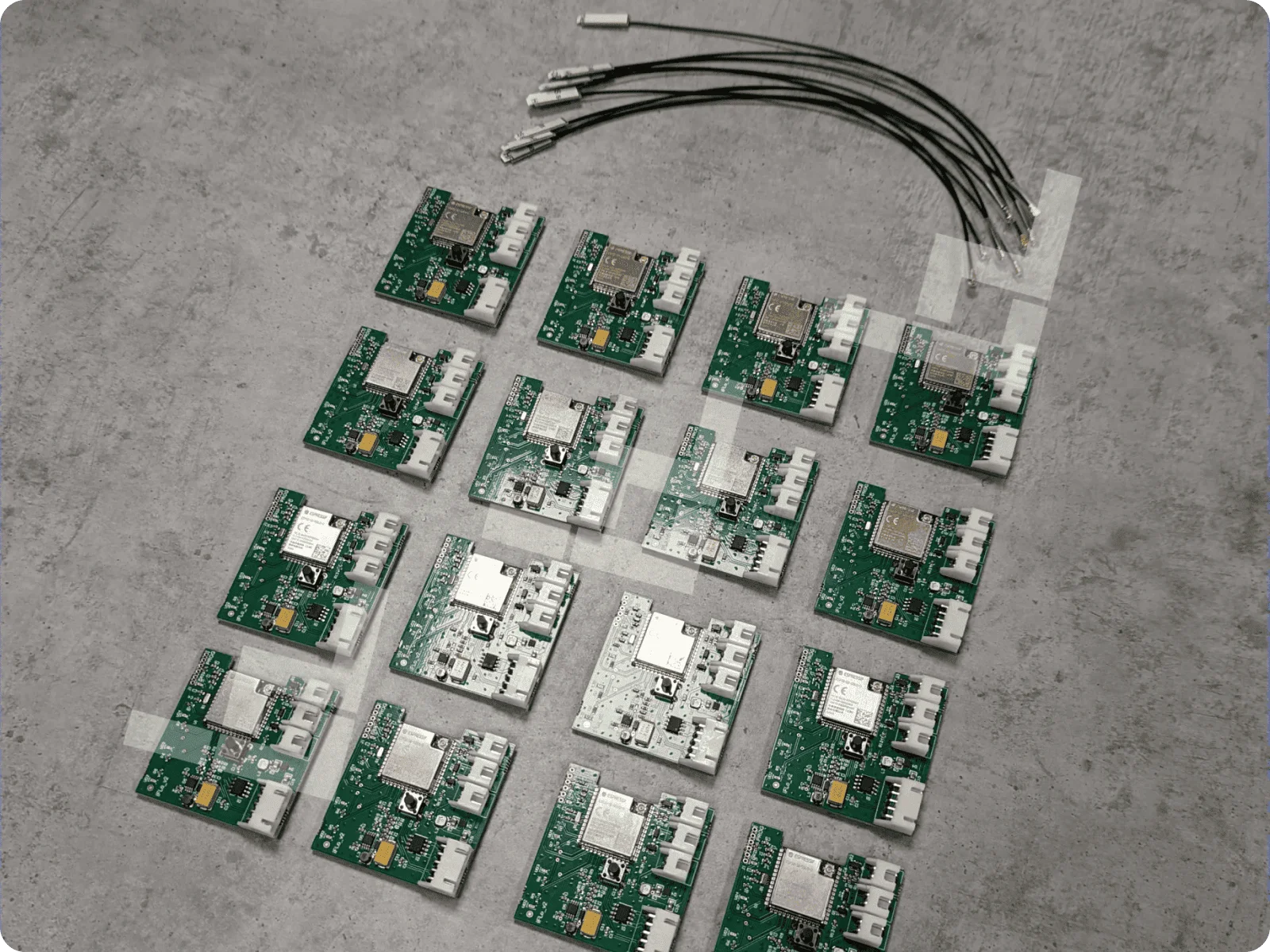 ESP microcontrollers for an A/C drain line cleaner.
ESP microcontrollers for an A/C drain line cleaner. A printed circuit board and the Intellect LED lamp
A printed circuit board and the Intellect LED lamp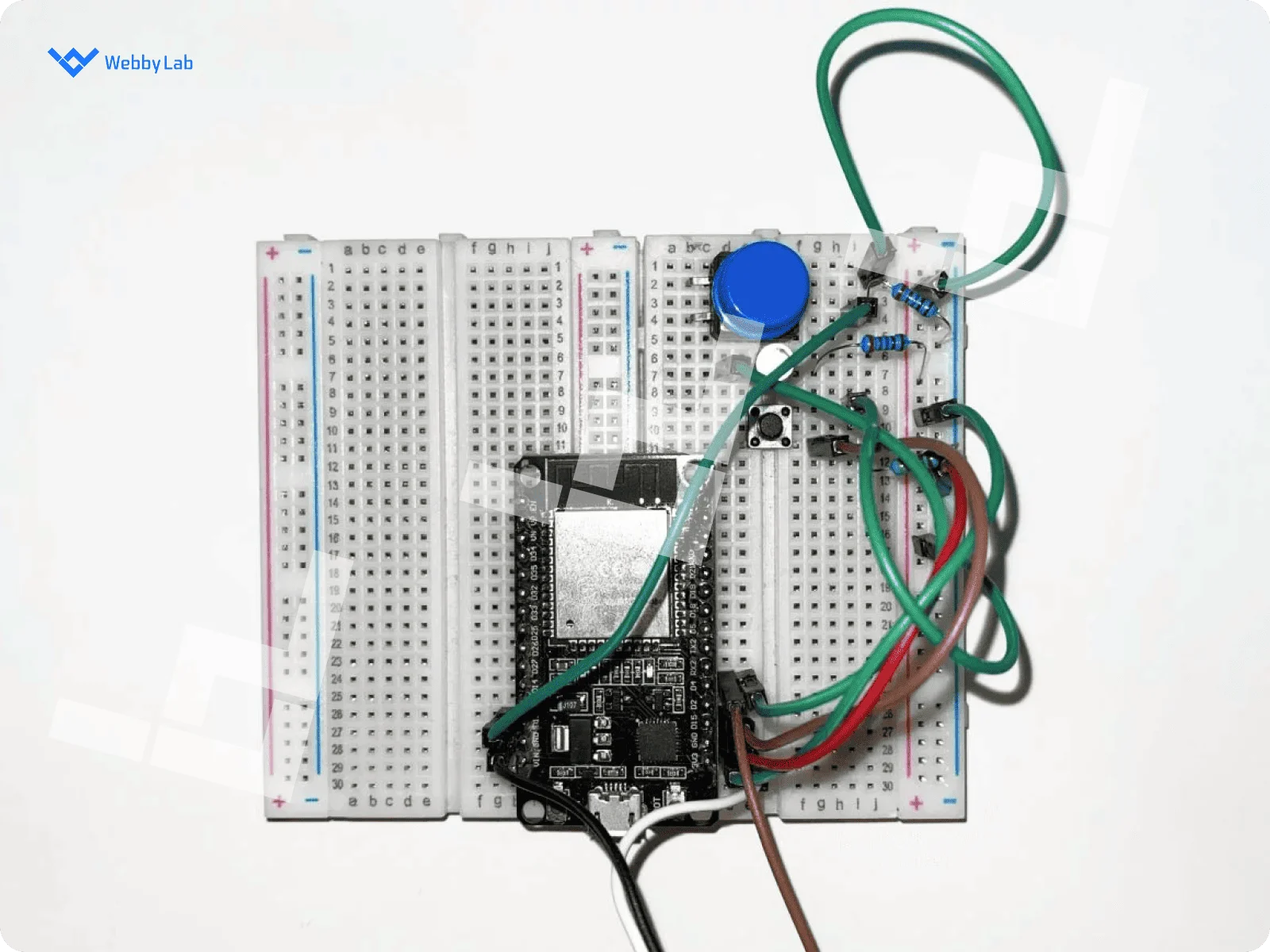 An ESP32 microcontroller with a built-in Wi-Fi module on a breadboard
An ESP32 microcontroller with a built-in Wi-Fi module on a breadboard A MyBox EV charging station
A MyBox EV charging station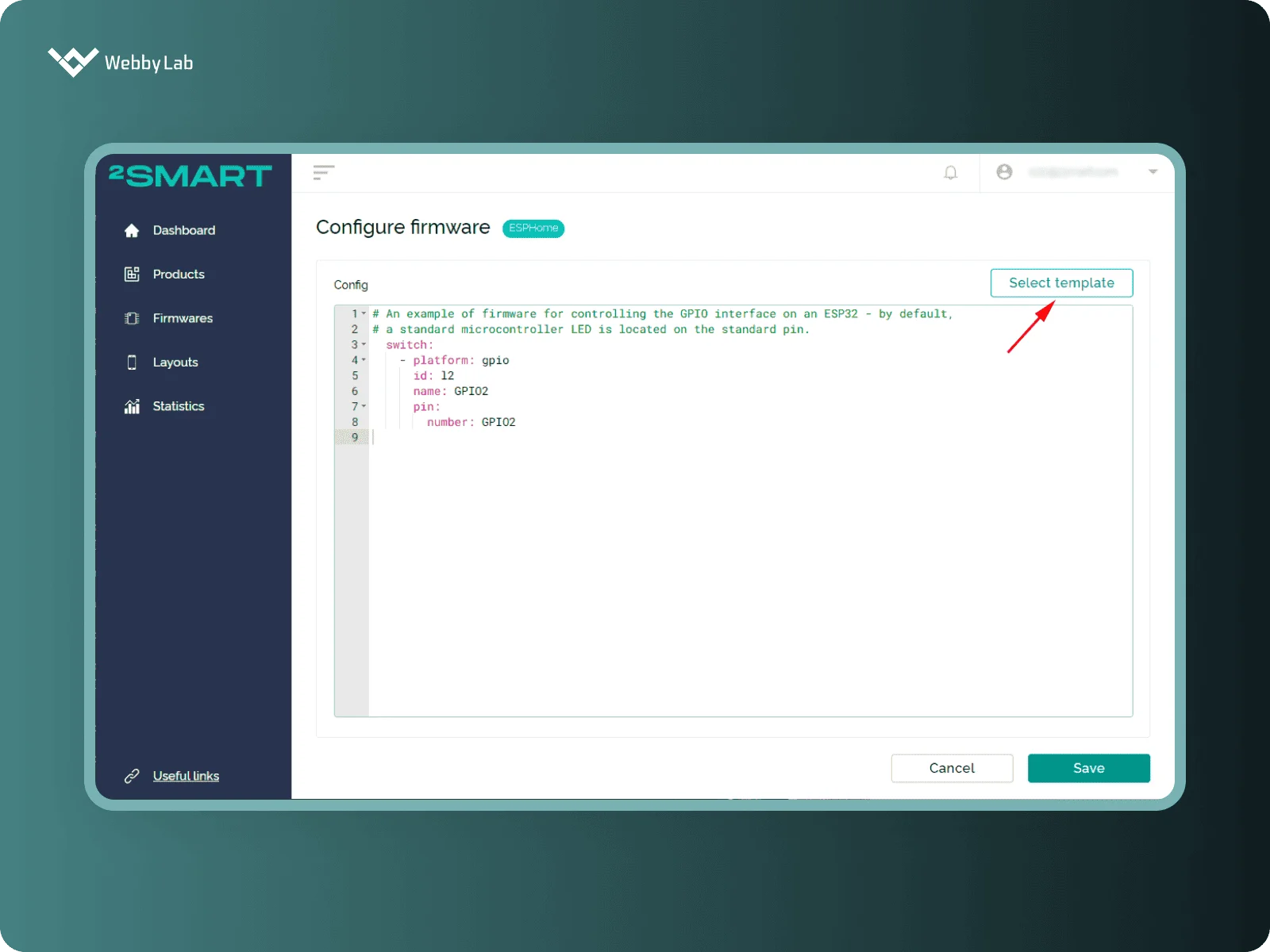 Configuring firmware in 2Smart Cloud
Configuring firmware in 2Smart Cloud



